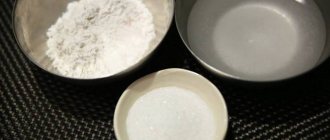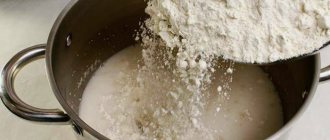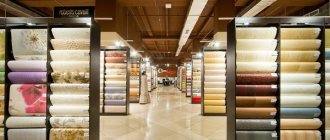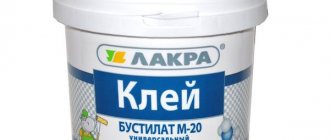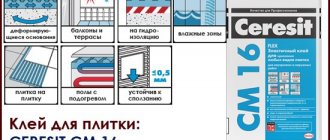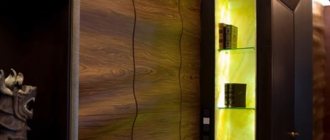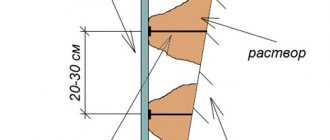Wallpaper glue is most often purchased at the same time as wallpaper rolls. Knowing the type of main surface and the characteristics of the wallpaper, choosing the optimal (suitable) adhesive composition is not particularly difficult. In addition, professional construction markets have competent consultants who can clearly clarify unclear points and advise something specific.
The right choice is an important matter, but the ability to use it correctly is also a significant factor. This article is devoted to the issue of using wallpaper glue.
Wallpaper glue consumption
Most companies put information on the approximate consumption of the adhesive composition on the packaging of their products, however, such data does not correspond to reality. The point is the uniqueness of each case of using the material. Certain conditions can significantly increase or decrease the quantitative consumption of the adhesive mass, so there may be some discrepancies with the consumption stated in the instructions.
The type of wallpaper is an important point that requires special attention before starting to dilute the material with warm water. The denser the structure and weight of the wallpaper, the thicker the adhesive mass should be.
A little trick! In this situation, it is possible to reduce the working consumption of the fixing agent, provided that the wall surface is properly prepared. You can roughly reduce costs by a third like this:
— use of a two-layer primer treatment instead of a single application;
— use of all materials from one manufacturer!
The structure of the main surface is the characteristics of the material on which the wallpaper is applied (concrete, wood, drywall, etc.). This in some cases seriously affects the consumption of the adhesive mass. For example, rough and porous surfaces require a larger volume of fixative, unlike dense and smooth counterparts.
Composition of wallpaper glue Econ for non-woven and heavy wallpapers
32 m2
Strengthened formula
- Just
- comfortable
- reliably
- economical
Special advantages:
- enhanced formula with methylcellulose
- secure wallpaper adhesion
- contains antifungal additives
- easy preparation, glue ready in 15 minutes
- easy, uniform application without smudges
- easy to use
- does not leave marks on the wallpaper
- the prepared solution is stored for up to 10 days in a tightly closed container
- economical
- German quality
Country of origin of raw materials: Germany
Preparation of the surface to be glued:
- remove old wallpaper, using water or a special wallpaper remover if necessary.
- Thoroughly clean the walls and fill cracks.
- Prime the surface with a weak solution of wallpaper glue (see table).
| Purpose | Cooking proportions | Amount of water per pack of glue, l | Area of the surface to be pasted, sq.m* |
| Preparing the surface to be glued | |||
| Treatment of the surface to be glued | 1:50 | 10,0 | 55-65 |
| Wallpapering | |||
| Non-woven wallpaper, structural wallpaper for painting, textile, washable and other types of heavy wallpaper | 1:28 | 5,6 | 27-32 sq.m/1-1.5 rolls |
* subject to compliance with the technology for preparing the adhesive solution, preparing the surface and gluing wallpaper. standard roll of non-woven wallpaper - 25.0 x 1.06 m.
Preparation and consumption of glue
- Gradually pour the contents of the entire pack into cold water with constant vigorous stirring for 20-30 seconds.
- After 15 minutes of repeated mixing, the glue is ready for use.
- See the table for glue consumption.
- Attention! To get a good result, it is recommended to use only clean tools, dishes and water. Also, to evenly distribute all glue components and get the best result, it is recommended to use the entire pack of glue at one time.
Wallpapering
- Mark a vertical line on the wall using a level.
- Starting from this line, apply glue to the wall with a brush or roller to the width of the wallpaper up to 20 cm, carefully covering the entire application area.
- Without cutting the roll, stick the canvas from the ceiling along a vertical line, preferably leaving allowances for the canvas on the top and bottom edges.
- Using a plastic spatula, smooth the wallpaper from top to bottom and from the center to the edges. removing air bubbles.
- Using a clean, damp sponge, carefully remove excess glue as it occurs.
- Cut off the excess fabric at the level of the baseboard and ceiling with a knife; you can use a straight metal spatula as a ruler.
Let's analyze the most likely glue consumption (in relation to vinyl wallpaper):
1. When the surface requires preliminary priming, the mixture (dry) is diluted with heated water in a ratio of 1:40. This proportion is obtained by dissolving a standard pack (300.0 g) of the substance in a container with 12.0 liters of water. The resulting amount of glue is enough for a full primer of approximately 100.0 square meters. m of concrete-brick walls.
2. To apply structural, textile or vinyl wallpaper, a fairly thick adhesive mass is required. Dry fixative powder (300.0 g) must be thoroughly diluted with heated water (6.0 l) - proportion 1:20. The prepared amount of mixture will be sufficient to thoroughly process approximately 36.5–40.3 square meters. m.
3. Thin, light wallpaper can be glued with a less dense glue. You can dilute a 300.0 gram package with 9.0 liters of water in a ratio of 1:30. The resulting volume, if applied correctly, will cover 45.5–50.3 square meters. m of working surface.
Distinctive features of wallpaper glue “Moment”
During the production process of the product, a special formula is used, thanks to which compositions intended for gluing walls with wallpaper on a textile, paper, vinyl, washable, non-woven basis are put on sale. Before you start gluing new material, the old layer is removed from the walls and the surface is cleaned. If necessary, putty and primer are applied to the walls, after which they are treated with an adhesive composition. These manipulations allow for rapid absorption of liquid.
Packages of Henkel “Moment” wallpaper glue contain instructions with precise instructions on the proportions, method of dilution with water, shelf life in dry and finished form. The boxes open without problems, the composition is dry and easy to pour into a mixing container. The standard shelf life is 5 years, but the product can be stored longer without changing the original characteristics. As practice shows, the stated proportions are enough for wallpapering.
The Henkel company also produces well-known brands of glue called “Econ” and “Metylan”, epoxy, shoe, and sealing compounds.
The wallpaper adhesive series includes four types:
- classic - paper-based wallpaper;
- vinyl – for vinyl wallpaper;
- non-woven fabric – for products based on non-woven fabric;
- extra – for exclusive, textured wallpaper.
The manufacturer produces primer compositions that help prepare the surface of the walls for wallpapering, as well as a special glue for processing joints.
Moment adhesive compositions are based on modified potato starch and components that prevent the formation of fungus and mold. This is very important in the case of using artificial coatings, due to which the walls lose their ability to transmit steam (non-woven, vinyl wallpaper). The composition also includes methylcellulose, which increases the adhesion of the coating to the surface.
Preparing the main surface
First of all, the wall surface must be carefully prepared. The designated scope of work consists of a set of actions.
1. Cleaning (removing) the old coating to a solid base (plaster, brick, concrete, etc.). The wallpaper to be removed must be thoroughly soaked with clean water and scraped off with a spatula. The tiles are usually knocked off and the paint is removed using a suitable active solvent.
2. Leveling the surface - carefully sealing cracks, crevices and other defects with paste plaster, and protruding parts are removed with a hammer or compact chipper. After the completed manipulations, rough polishing is performed with sandpaper. Then the surface is cleaned of all contaminants, leveled with putty and sanded again with fine sandpaper (P140–P170).
How to glue paper-based vinyl wallpaper: leveling walls
In order for the walls with the coating glued on them to look as attractive as possible, they must first be leveled. This is especially true for owners of old apartments whose walls do not have an ideal surface. The alignment method is selected depending on the vertical deviation. This parameter is checked using a level and a cord, and if the deviation is only 5-10 mm, the surface can simply be treated with putty.
Leveling with putty
It is recommended to apply the starting layer of putty in two layers, between which a special painting mesh can be laid. This will prevent microcracks from occurring on the surface. The direction of the layers can be perpendicular to each other, so you level the surface in all directions.
When working, it is worth considering that the angle of inclination of the spatula determines the thickness of the layer; the smaller the first one, the thicker the second one.
How to dilute wallpaper glue?
Dilute wallpaper glue with purified water, following the instructions in the instructions supplied with the substance.
The sequence of actions is most often as follows:
— the required volume of water is poured into a deep container (plastic or enamel);
Attention! If you use cold water, the time for stirring and cooking the glue will double. When heated water is used for dissolution, the powder concentrate dissolves almost instantly, but there is a risk of the formation of lumps and clots. The latter option will require constant monitoring and continuous stirring of the mixture until it is completely cooked!
- pouring dehydrated (dehydrated) glue granules in small portions into a container with water. The solution must be thoroughly mixed.
It is most convenient to carry out high-quality stirring with a construction mixer or a drill with a mixer attachment at a slow speed setting. When there are no similar tools, the prepared mass can be easily stirred with a suitable stick or, for example, a plastic tube;
Advice! It is very convenient to prepare the adhesive mass in pairs with an assistant - someone pours the granulated powder, and the second continuously mixes the composition!
— keep the glue for 14–17 minutes until the thick solution is homogenized;
- final mixing of the mass, after which it will be completely ready for the start of finishing work.
Cooking instructions
There are a huge number of types of Moment glue, but you need to act according to the standard scheme:
- a bucket or bowl with a volume of at least 6 liters;
- add dry powder from the package to cold water and mix thoroughly and quickly;
- can be done manually using a special spatula or with a mixer;
- mixture for 15 minutes for swelling, and for Moment Classic for 3 minutes;
- mix until smooth, resulting in a transparent, odorless solution that is applied directly to the walls;
- The finished glue can be stored at room temperature in a special container with a closed lid for up to 10 days, and Moment Non-woven for up to 7 days.
You need to mix thoroughly and without rest. During the dilution process, the mass is obtained without lumps and a homogeneous mixture is quickly formed. When applying Moment to the wallpaper, the mixture does not bubble, but lays down in an even layer, and you can clearly see on the wallpaper where the glue was applied and where it was not. After drying, the composition does not leave stains on the wallpaper, and its excess can be easily removed with a cloth.
How to properly process joints is shown in the following video:
Recommended Posts
How to properly glue wallpaper end-to-end
Which glue for paper wallpaper is better
Choosing wallpaper glue: consumption and tools
Which glue is best for non-woven wallpaper?
Is it possible to glue new wallpaper over old ones?
Non-woven wallpaper adhesive
